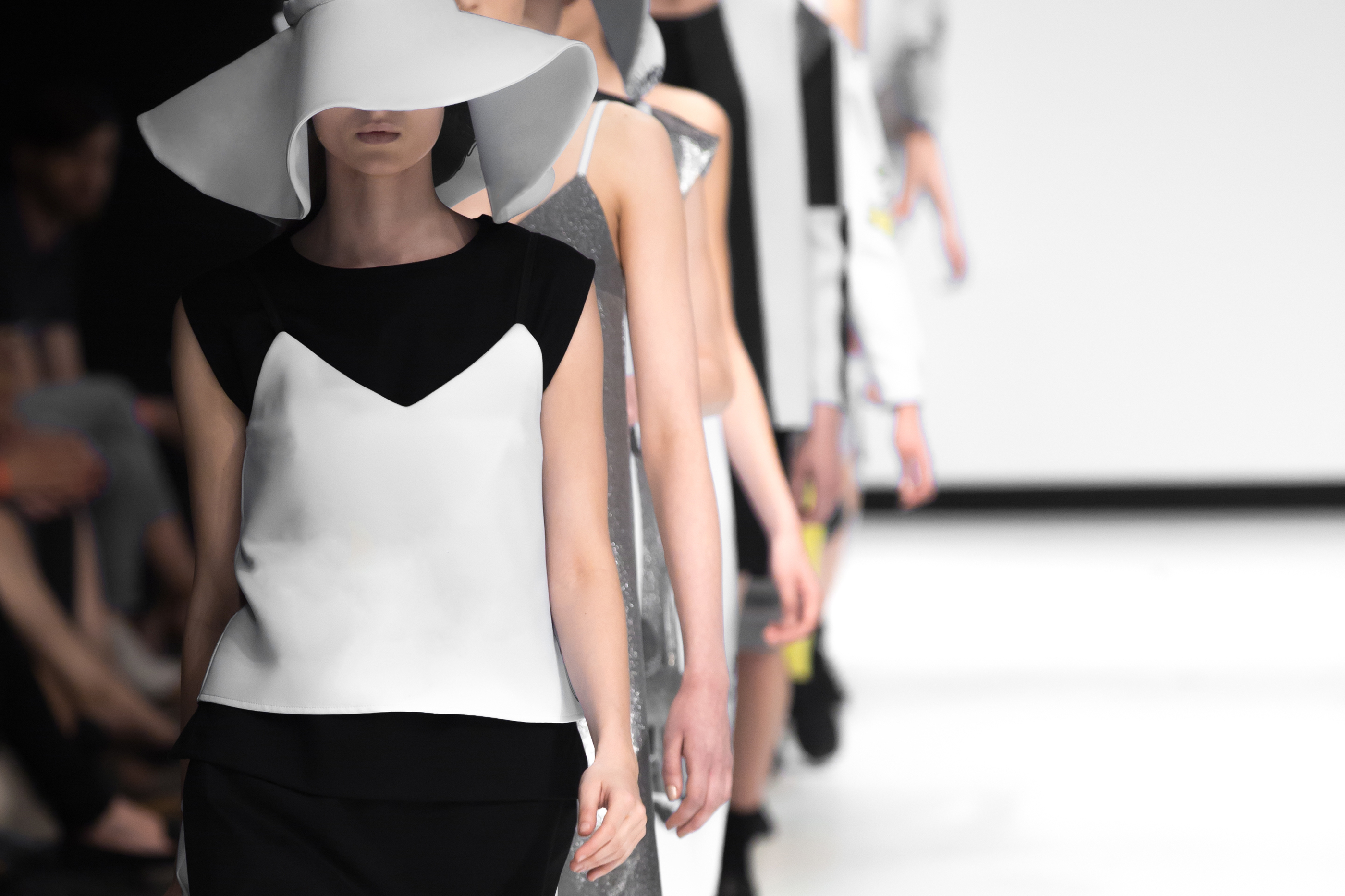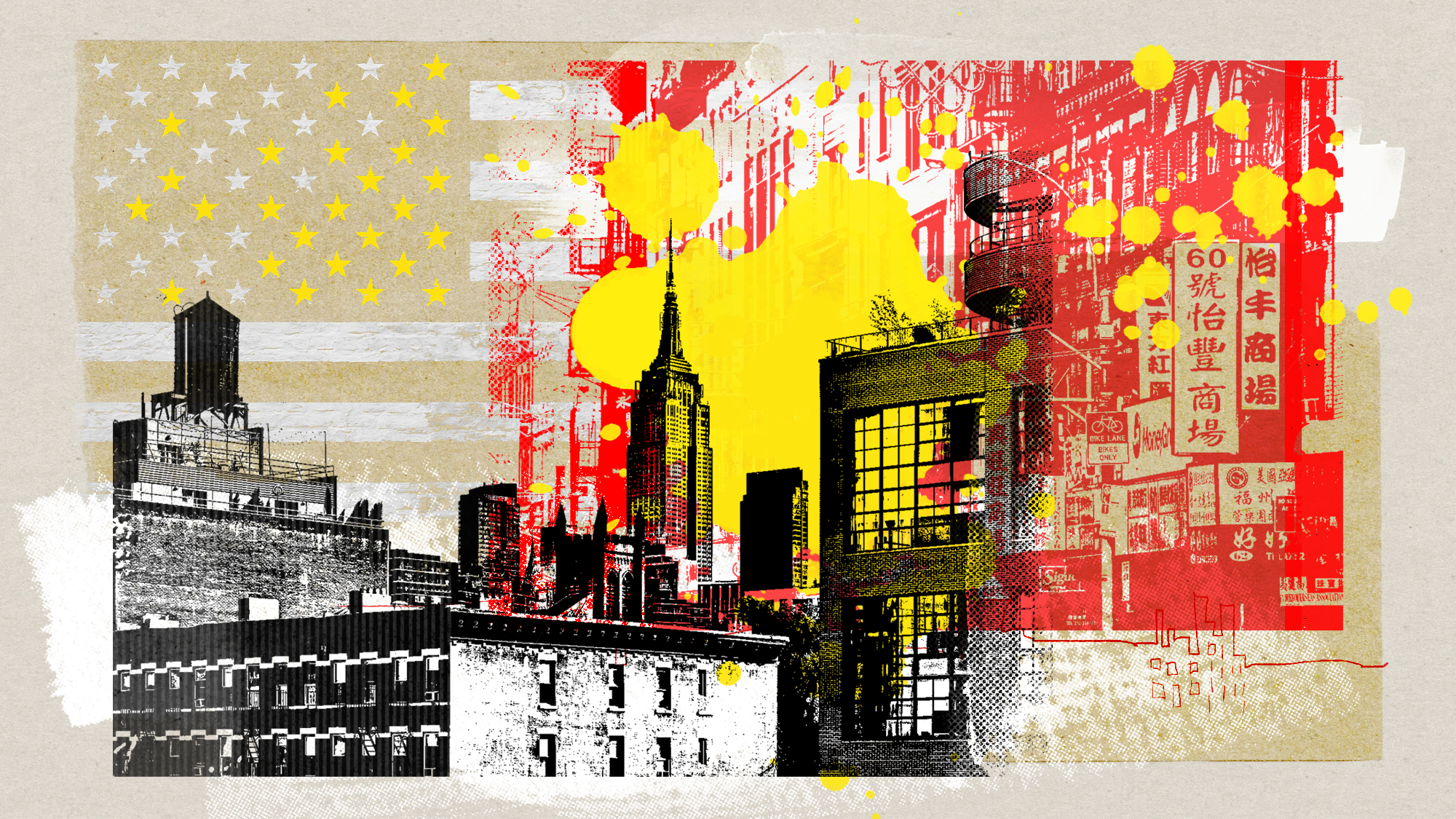52 ideas that changed the world - 48. Fashion
Humans’ love affair with clothes dates back around 170,000 years

In this series, The Week looks at the ideas and innovations that permanently changed the way we see the world. This week, the spotlight is on fashion:
Fashion in 60 seconds
Fashion is the expression of a specific aesthetic style that is popular in a particular time and context. It usually refers to things worn by a person: clothing, accessories, footwear, make-up, hairstyles and tattoos and piercings.
The Week
Escape your echo chamber. Get the facts behind the news, plus analysis from multiple perspectives.

Sign up for The Week's Free Newsletters
From our morning news briefing to a weekly Good News Newsletter, get the best of The Week delivered directly to your inbox.
From our morning news briefing to a weekly Good News Newsletter, get the best of The Week delivered directly to your inbox.
“Fashion’s sizeable social scope and requisite expiration date is what makes it so useful as a marker of time,” says Henry Navarro Delgado, assistant professor of fashion at Toronto’s Ryerson University, in an article on The Conversation.
The term “fashion industry” generally refers to the global business of selling clothes.
“Some observers distinguish between the fashion industry (which makes ‘high fashion’) and the apparel industry (which makes ordinary clothes or ‘mass fashion’)”, says Encyclopaedia Brittanica, although “by the 1970s the boundaries between them had blurred”.
How did it develop?
A free daily email with the biggest news stories of the day – and the best features from TheWeek.com
Fashion by definition is ever changing but it is not a new concept. Humans first began wearing clothing around 170,000 years ago, according to a 2011 study published in the journal Molecular Biology and Evolution.
However, around 30,000 years ago, clothes became significantly more sophisticated.
In 2009, researchers discovered coloured fibres believed to be from clothes in a cave near the site of Stone Age settlements in the foothills of the Caucasus in Georgia, according to a paper published in Science Magazine.
“This suggests that clothes were becoming more than just useful. They also served decorative purposes. In other words, clothes were becoming symbolic,” says the BBC.
“When you look at contemporary hunter-gatherers who don’t use clothing, they decorate themselves brilliantly with body painting. You don’t need clothing in order to do that,” Ian Gilligan of the University of Sydney told the broadcaster.
But when clothes started to be worn for practical purposes such as warding off the cold, the decorative function was moved to these garments. “Once that happens, humans need clothing for that social purpose as well as any thermal purpose,” says Gilligan.
This could explain how clothes became part of humans’ identity, and how fashion naturally followed.
“What’s more, by signalling that we belong to particular social or political groups, they can also set us apart from one another,” says the BBC.
The concept of fashion as it is known today began in the late 18th century, when the idea of clothes as a form of self-expression became more popular, says the Fashion History Timeline site.
“By 1750, the consumer revolution brought about cheaper copies of fashionable styles, allowing members of all classes to partake in fashionable dress. Thus, fashion begins to represent an expression of individuality. The constant change in dress mirrored political and social ideals of the time,” the website adds.
Queen Marie Antoinette’s dressmaker, Marie Jeanne Bertin, known as Rose Bertin, had a “significant impact on the fashion of the period and laid the foundations for the future of Parisian haute couture”, says the Chateau de Versailles website.
Bertin’s influence on fashion, launching new clothing trends and hairstyles, made her a key ally of the French queen and she soon became regarded as the unofficial “Minister of Fashion”. But Bertin was one of the first victims of the fickle nature of fashion: on returning to the capital in 1795 after fleeing during the French Revolution, she found Parisian fashion turned on its head.
“Bertin's style, identified so closely with the excesses of the monarchy, was utterly out of vogue. Rose Bertin fell into anonymity and died on 22 September 1813,” says the palace website.
Nevertheless, Paris had emerged as the fashion capital, and it was from the city that fashion explicitly and expressly designed for individuals continued to spread. By the mid 20th century, fashion garments were being mass produced and people had never had more choice of what to wear.
“Towards the end of the 20th century, fashion awareness among people increased, and they began choosing clothes for themselves based on comfort and their own style, instead of relying on the trends prevailing in the market,” says the Fibre2Fashion site.
How did it change the world?
The symbiotic relationship between fashion and politics has had a significant impact on the world as we know it. Fashion not only reflects ideological and political shifts but can also play a role in furthering the aims of political movements.
The suffragettes were one group who knew the importance of sartorial choices in gaining popular support.
“The suffragettes took care to ‘appeal to the eye’– particularly when in full glare of media attention on parade or demonstrating,” writes Cally Blackman, author of A Portrait of Fashion, in an article for The Guardian.
“The avoidance of sartorial affront worked. Membership numbers grew, and it became fashionable to identify with the struggle for the vote. Suffragettes wore purple for loyalty and dignity, white for purity, and green for hope,” Blackman continues, adding that campaigners tactics was “an early triumph for fashion branding”.
Decades later, in the US, the Black Panthers wore black bloc - “dress indicated a willingness to resort to violence if necessary”, says fashion professor Delgado on The Conversation.
Indeed, our choices of clothing often have some meaning behind them - even choosing not to put too much thought into our outfits is a choice in itself.
A 2012 study by researchers from Illinois’ Northwestern University found that wearing specific articles of clothing had an effect on the wearer’s psychology and performance.
“For example, a lab coat is associated with intelligence and scientific thinking. When a person wears a lab coat, these characteristics symbolised by the coat seem to have positive effects on their performance of specific tasks,” says Deutsche Welle.
“What we wear, and the symbolic meaning we associate with specific fashion items, has measurable effects on our mental state,” adds the German newspaper.
As well as allowing greater individual expression, fashion has become a major global industry that is now worth about £2tn ($1.5tn), according to the BBC.
However, this commercialisation of clothes in the form of fast fashion - the industry that mass produces cheap version of catwalk designs - has come at a steep environmental cost.
The Intergovernmental Panel on Climate Change (IPCC) has calculated the fashion industry produces 10% of global carbon dioxide emissions, reports The Guardian.
-
 Heavenly spectacle in the wilds of Canada
Heavenly spectacle in the wilds of CanadaThe Week Recommends ‘Mind-bending’ outpost for spotting animals – and the northern lights
-
 Facial recognition: a revolution in policing
Facial recognition: a revolution in policingTalking Point All 43 police forces in England and Wales are set to be granted access, with those against calling for increasing safeguards on the technology
-
 Codeword: December 14, 2025
Codeword: December 14, 2025The daily codeword puzzle from The Week
-
 Femicide: Italy’s newest crime
Femicide: Italy’s newest crimeThe Explainer Landmark law to criminalise murder of a woman as an ‘act of hatred’ or ‘subjugation’ but critics say Italy is still deeply patriarchal
-
 Brazil’s Bolsonaro behind bars after appeals run out
Brazil’s Bolsonaro behind bars after appeals run outSpeed Read He will serve 27 years in prison
-
 Americans traveling abroad face renewed criticism in the Trump era
Americans traveling abroad face renewed criticism in the Trump eraThe Explainer Some of Trump’s behavior has Americans being questioned
-
 Nigeria confused by Trump invasion threat
Nigeria confused by Trump invasion threatSpeed Read Trump has claimed the country is persecuting Christians
-
 Sanae Takaichi: Japan’s Iron Lady set to be the country’s first woman prime minister
Sanae Takaichi: Japan’s Iron Lady set to be the country’s first woman prime ministerIn the Spotlight Takaichi is a member of Japan’s conservative, nationalist Liberal Democratic Party
-
 Russia is ‘helping China’ prepare for an invasion of Taiwan
Russia is ‘helping China’ prepare for an invasion of TaiwanIn the Spotlight Russia is reportedly allowing China access to military training
-
 Interpol arrests hundreds in Africa-wide sextortion crackdown
Interpol arrests hundreds in Africa-wide sextortion crackdownIN THE SPOTLIGHT A series of stings disrupts major cybercrime operations as law enforcement estimates millions in losses from schemes designed to prey on lonely users
-
 China is silently expanding its influence in American cities
China is silently expanding its influence in American citiesUnder the Radar New York City and San Francisco, among others, have reportedly been targeted